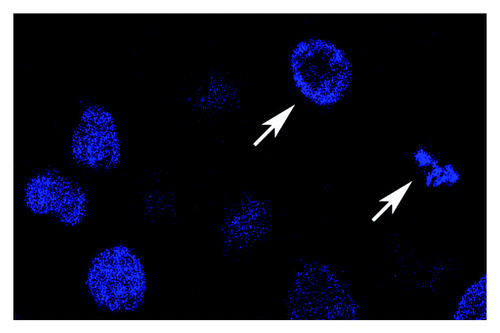Abstract
Comment on: Wilk A, et al. Cell Cycle 2012; 11:2660-71.
When one thinks of the popular lipid-lowering drug fenofibrate, it is usually in connection with trying to prevent heart attack or stroke. One of the most unlikely discoveries of recent weeks is that fenofibrate may represent a new way to treat the deadly brain tumors, glioblastomas.Citation4 Glioblastoma multiforme is an astrocytoma form of glioma, or glial cell tumor, that accounts for more than 50% of all brain tumors. Glioblastoma is one of the deadliest tumors known, with the worst prognosis of any CNS neoplasia. Despite some hopeful advances, the median survival time after diagnosis is a dismal 14 mo.Citation3 Although glioblastoma strikes only about three out of 100,000 Americans, it does so without any clear genetic predisposition or environmental suspect. Glioblastoma was recently highlighted as the cause of death of Sen. Edward M. Kennedy, a strong proponent of cancer research.Citation2
Krzysztof Reiss and colleagues, presently at the Neurological Cancer Research, Stanley S. Scott Cancer Center, LSU have been working on means of stimulating apoptosis, or programmed cell death, in gliomas. Their focus has been on the Bim pathway. Although other recent work focuses on Bim,Citation1 the signals triggering this pathway have been ill-defined. Working on the hypothesis that switching cancer cells from glycolysis to fat-burning could inhibit them, the LSU group tested fenofibrate, a drug used frequently along with statins to lower lipids and cholesterol by stimulating fat metabolism. They found that low doses of fenofibrate arrest growth of glioblastoma cells in culture, while higher doses induce massive apoptosis. Their results revealed that fenofibrate induced phosphorylation and nuclear translocation of the transcription factor, FoxO3A. FoxO3A, in turn, induced expression of Bim, resulting in glioblastoma cell death. The connection with FoxO3A is a promising new avenue of investigation for these deadly brain tumors. This is far from a cancer cure, but fenofibrate is a drug already on the market, and with few side effects. It can presumably be used immediately as an adjunct with existing anticancer agents ().
References
- Estrada-Bernal A, et al. Neuro Oncol 2012; 14:405 - 15; http://dx.doi.org/10.1093/neuonc/nos005; PMID: 22351749
- Kolata G, et al. 2009New York Times. 2009.
- Van Meir EG, et al. CA Cancer J Clin 2010; 60:166 - 93; http://dx.doi.org/10.3322/caac.20069; PMID: 20445000
- Wilk A, et al. Cell Cycle 2012; 11:2660 - 71; http://dx.doi.org/10.4161/cc.21015; PMID: 22732497
